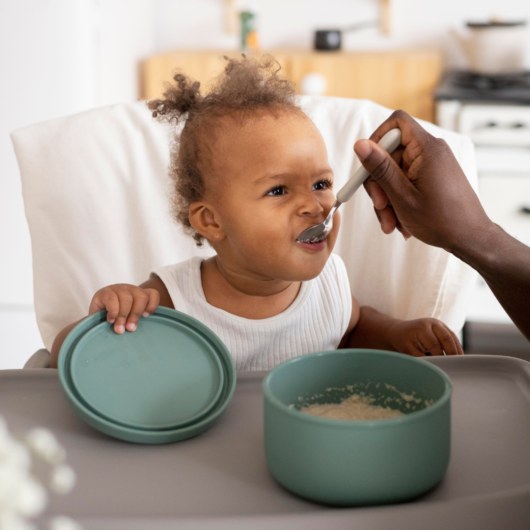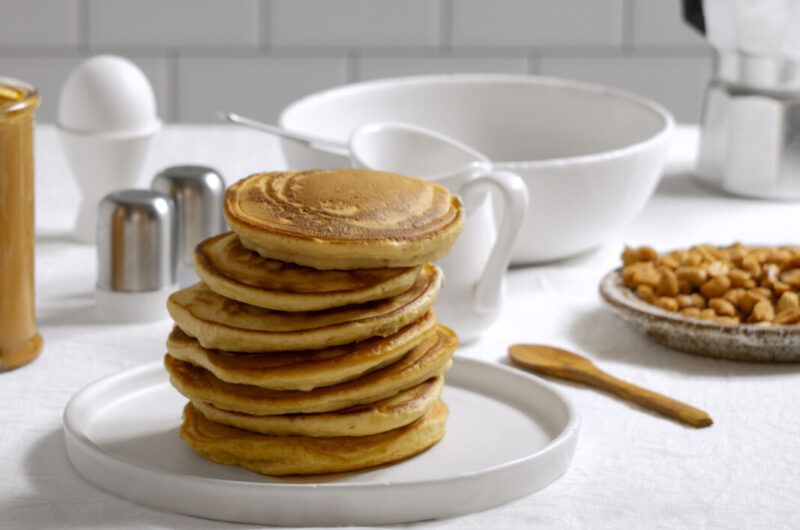
May is National Asthma and Allergy Awareness Month! This is a great opportunity to highlight proactive measures parents can take to reduce the risk of food allergies in children. One significant advancement in this area is the early introduction of peanut-containing foods to infants.
What Does the Research Say?
Groundbreaking studies, such as the LEAP (Learning Early About Peanut Allergy) trial, have demonstrated that introducing peanut-containing foods to infants between 4 and 6 months of age can substantially decrease the likelihood of developing a peanut allergy by 86%. This approach is especially beneficial for high-risk infants, including those with severe eczema or egg allergies.
The National Institute of Allergy and Infectious Diseases (NIAID) guidelines recommend:
- High-risk infants: Introduce peanut-containing foods between 4–6 months, after consulting with a pediatrician.
- Moderate-risk infants: Introduce peanut-containing foods around 6 months at home.
- Low-risk infants: Introduce peanut-containing foods freely along with other solid foods.
Early and regular exposure is crucial. Introducing peanut-containing foods 2–3 times per week, starting as early as 4–6 months, can help build tolerance and reduce allergy risk.
Peanut Butter Baby Pancakes: A Tasty Introduction

Introducing peanuts to your baby’s diet can be both safe and delicious with age-appropriate recipes. These Peanut Butter Baby Pancakes are soft, nutritious, and perfect for infants ready to explore new tastes and textures.
Recipe by: National Peanut Board, Kristina LaRue, RD, CSSD
Published by: University of Georgia Extension
Suggested Age: 7+ months
Servings: 15 mini pancakes
Calories per pancake: 40 kcal
Ingredients:
- ½ cup whole milk Greek yogurt
- ¼ cup milk
- 2 large eggs
- 1 teaspoon vanilla extract
- 1 teaspoon maple syrup
- 1 teaspoon baking powder
- ¼ cup peanut powder
- ½ cup whole wheat flour
Directions:
- In a blender, combine yogurt and milk; blend until smooth.
- Add eggs, vanilla, maple syrup, and baking powder; pulse just until mixed.
- Add peanut powder and flour; blend until fully incorporated, taking care not to overmix.
- Heat a non-stick pan over medium-low heat; coat with butter or vegetable oil.
- When the butter starts to bubble, pour batter into the pan. Flip when bubbles form on the surface; cook until both sides are golden.
Tips:
- To reduce added sugars, skip syrup and instead thin smooth peanut butter with water or milk to drizzle over pancakes.
- Freeze leftovers by stacking pancakes with wax paper between each and storing them in a freezer-safe container.
Note: This recipe contains dairy and wheat. Ensure your baby has previously tolerated these ingredients before introducing this dish.
Final Thoughts for Parents
- Consult your pediatrician: Especially if your baby is at high risk for allergies.
- Avoid choking hazards: Never give whole peanuts or chunky peanut butter to infants.
- Monitor reactions: Introduce new foods one at a time and watch for any signs of allergies.
- Maintain consistency: Regularly include peanut-containing foods in your baby’s diet to help maintain tolerance.
By staying informed and proactive, we can take meaningful steps to reduce the risk of peanut allergies in children. Let’s use this National Asthma and Allergy Awareness Month to spread awareness and support healthy beginnings for our little ones.
Learn more and explore additional peanut-friendly recipes for infants at:
👉 UGA Peanut Allergy Prevention Project